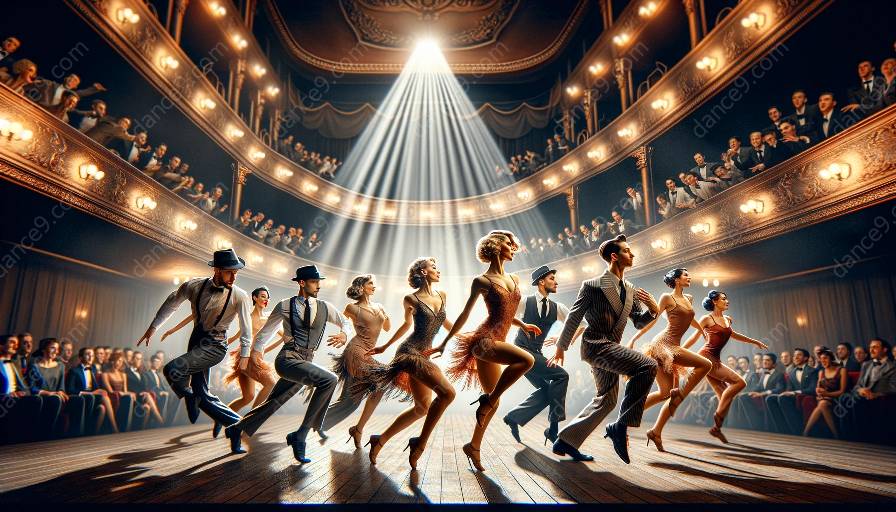Jazz dance, with its energy, rhythm, and spontaneity, is an art form that truly thrives on collaboration and teamwork. In jazz dance, performers not only showcase their individual talents but also engage in the seamless coordination and synchronization of movements with their fellow dancers. The dynamic and interactive nature of jazz dance demands a high level of teamwork, trust, and communication among the dancers, making it a perfect example of collaborative artistry.
Understanding Jazz Dance
Before delving into the significance of teamwork and collaboration in jazz dance, it's essential to comprehend the essence of this unique dance form. Jazz dance originated from the African American vernacular dance styles and evolved alongside the jazz music genre. It encompasses a wide range of styles and techniques, including syncopated rhythms, isolations, improvisation, and a strong emphasis on individual expression.
One of the defining characteristics of jazz dance is its fusion of various influences, allowing for a diverse and inclusive approach to movement and expression. Moreover, jazz dance often encourages dancers to infuse their own personality and style into their performances, resulting in a rich tapestry of artistic expressions within a single dance piece.
The Role of Teamwork in Jazz Dance
While jazz dance celebrates individuality and self-expression, it also heavily relies on teamwork and collaboration to create captivating performances. In a jazz dance ensemble, every dancer plays a crucial role in contributing to the collective experience. Whether it's performing intricate choreography, executing seamless transitions, or maintaining syncopated rhythms, dancers must work together cohesively to convey the fluidity and dynamism inherent in jazz dance.
Collaboration in jazz dance goes beyond mere synchronization of movements. It involves the mutual support and encouragement among dancers, fostering a sense of unity and shared vision. By relying on one another, dancers in a jazz ensemble become part of a cohesive unit, where each member's strengths enhance the overall impact of the performance.
Furthermore, jazz dance often incorporates partner work and group formations, requiring dancers to adapt and respond to their fellow performers in real time. This interactive and interconnected approach cultivates a deep sense of trust and reliance on one another, leading to performances that are not only visually impressive but also emotionally resonant.
Creative Collaboration in Jazz Dance Classes
When it comes to jazz dance classes, the spirit of collaboration is at the forefront of the learning experience. Instructors emphasize the importance of supporting and respecting one another, fostering an environment where students can explore their individual creativity while learning to work harmoniously within a group.
Through structured exercises and improvisational activities, jazz dance classes encourage students to engage in creative collaboration. These activities may involve group improvisation, where dancers take turns leading and following, or partner exercises that require attentive communication and synchronization.
Moreover, jazz dance classes often provide opportunities for choreographic collaboration, allowing students to contribute ideas and movements to group routines. This collaborative approach not only nurtures the collective creativity of the ensemble but also empowers individual dancers to take ownership of their artistic contributions within the group dynamic.
The Impact of Teamwork on Performance Quality
Effective teamwork and collaboration significantly impact the quality of jazz dance performances. When dancers work seamlessly together, the energy and dynamism of their collective movements elevate the overall impact of the choreography. This synchronized harmony not only captivates the audience but also creates a sense of shared experience among the performers themselves.
Furthermore, the supportive and collaborative environment within a jazz ensemble fosters a sense of camaraderie and mutual respect, enhancing the emotional depth and authenticity of the performance. As dancers trust and rely on one another, they create an atmosphere that transcends mere technical proficiency, delving into the realm of shared passion and artistic interconnectedness.
Conclusion
Jazz dance exemplifies the beauty of teamwork and collaboration within the realm of performing arts. The seamless interplay of individual expression and collective creativity in jazz dance reflects the essence of collaborative artistry. Through trust, communication, and synchronized movements, jazz dancers create mesmerizing performances that celebrate the power of unity and shared expression.













































































